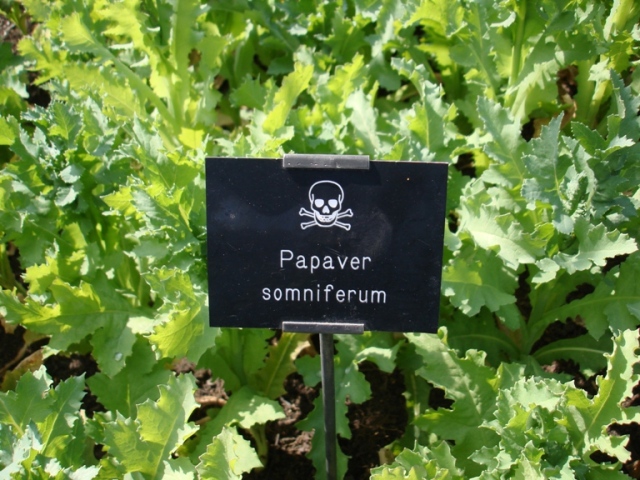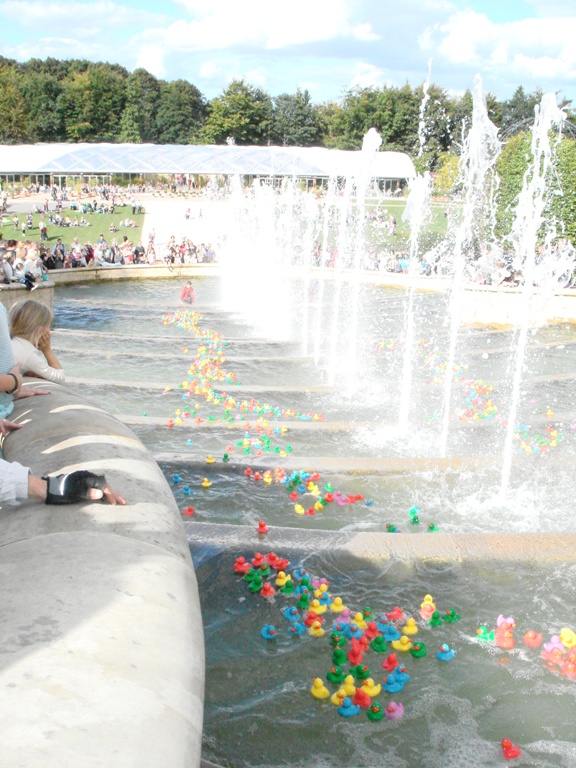Icon – a person or thing regarded as a representative symbol or as worthy of veneration (OED)
Themes came thick and fast at Andrew Fisher Tomlin’s recent talk for the Surrey group: not surprising really considering his portfolio career as a garden designer, lecturer, member of the selection panel for Chelsea Flower Show and Trustee for Thrive the horticultural charity. Based on his own views and those of his peers, his topic was ‘New Planting: a Prediction of the Gardens and Plants that will Become Iconic’ focusing on what is important in gardens now and what will stand the test of time.
Most of the gardens he selected are either renovations or new developments using brownfield sites and for a tour of some unusual gardens follow the links on the name. Andrew has been the designer of the wetland area and included the Olympic Park, 250 acres of new parklands created from former industrial land and using 4,000 semi-mature trees, over 300,000 wetland plants and acres of annual and perennial meadows designed to flower during the London 2012 Games; The Eden Project famously created in a former clay mine and containing the largest green house in the world; Parc André Citroën in Paris, once a car factory, now a fascinating park of many different gardens, fountains and helium balloon rides; Gardens by the Bay in Singapore, opening in June 2012 and containing vast vertical planting sculptures; The High Line , a public park built on an historic freight rail line elevated above the streets on Manhattan’s West Side in New York.
For restorations Andrew selected: Trentham Gardens Stoke on Trent where Tom Stuart Smith has done a contemporary revival of the famous Italian Gardens; Charlton House, a Jacobean mansion in Greenwich, where perennial planting is used for all year interest; Scampston Hall in Yorkshire, with Piet Oudolf perennial plantings; again in Yorkshire Broughton Hall Utopia is an award winning building designed by Sir Michael Hopkins set within the original walled garden, which has been redesigned and restored by Dan Pearson; Broughton Grange in Oxfordshire with its redesigned parterre by Tom Stuart-Smith based on cell structure; The Alnwick Garden in Northumberland with its amazing Cascade and celebrated Poison Garden created from a derelict and forgotten site.

An insight into the budgetary conflicts of garden design – it costs £75/metre/year to plant and maintain an annual bedding scheme, reducing to £6 for shrubs and an amazing £1/metre/year for a perennial meadow. The Borough of Greenwich clearly had this in mind when choosing the planting for Charlton House.
Future developments will see an increase in interest in grey water and rainwater harvesting as well as a move to reusing materials on site. Andrew never takes soil away from a garden, it is reused within the development. If this requirement extends to reuse of hard materials this could have interesting outcomes – crazy paving using concrete slabs could be seen as a style early adopter.
Diseases will continue to affect what we can grow. Phytophthora ramorum was found on nursery stock in 2002 and in the wild in 2009. Cameraria ohridella the Chestnut leaf miner, first found in Wimbledon ten years ago, is spreading at the rate of 40-60km/year. Micropropagation at Duchy College is enabling clean stock to be propagated, but old sanitary methods such as steralising tools and avoiding walking on open soil in different areas of our gardens are things that we can all do.
The iconic plant list was interesting in that I knew most of the plants mentioned, but it did prompt some gasps of surprise from the audience starting as he did with Verbena bonariensis. “A weed” was one of the comments, but I agree with Andrew, although it does self seed, it is a remarkable plant, which doesn’t need staking, is see-through and easily removed if it has seeded in the wrong place. After this starter, a grass which might have induced a groan if shown first was greeted warmly, Calamagrostis × acutiflora ‘Karl Foerster’ a statuesque variety, followed by: Snowy woodrush, Luzula nivea; Sedum ‘Matrona’, European Plant of the Year 2005; Echinacea purpurea, the 108 listings in the Plant Finder under this name evidence the popularity of this plant; almost matched by the 97 entries under Astrantia major; Allium hollandicum ‘Purple Sensation’ apparently popularised by Alan Titchmarsh; and finally Dierama, the angel’s fishing rod.
For shrubs: Myrtle; Hydrangea paniculata Pinky-Winky; small cultivars of Buddleja; Sambucus nigra f. porphyrophylla ‘Black Lace’; the Chinese rice-paper plant Tetrapanax species and finally a new arrival – Lavandula ‘Kingston’ not available until later in 2012.
For trees choose from: Amelanchier lamarckii; Malus × robusta ‘Red Sentinel’; Aesculus indica ‘Sydney Pearce’ as seen in Kew Gardens, which does not seem to be affected by the problems hitting most of our horsechestnuts; the Preston Twins in Brighton, part of the National Collection of Ulmus; a reluctant mention for the ubiquitous Betula utilis var. jacquemontii, a feature in many Chelsea show gardens; and the English Oak Quercus robur, also listed in the Plant Finder as French, Polish or Slavonian Oak.
Finally a mention for Grow your Own; Forest Gardening as done by Robert Hart and written about by Martin Crawford; Conceptual gardens as seen at Hampton Court Palace Flower Show and Urban and community gardens.
And all this in an hour. There are days of potential research coming from this talk – I am starting with Forest Gardens, something I know nothing about.
The header for this posting; have a look at this unusual view of the classic Cascade at Alnwick Garden.


